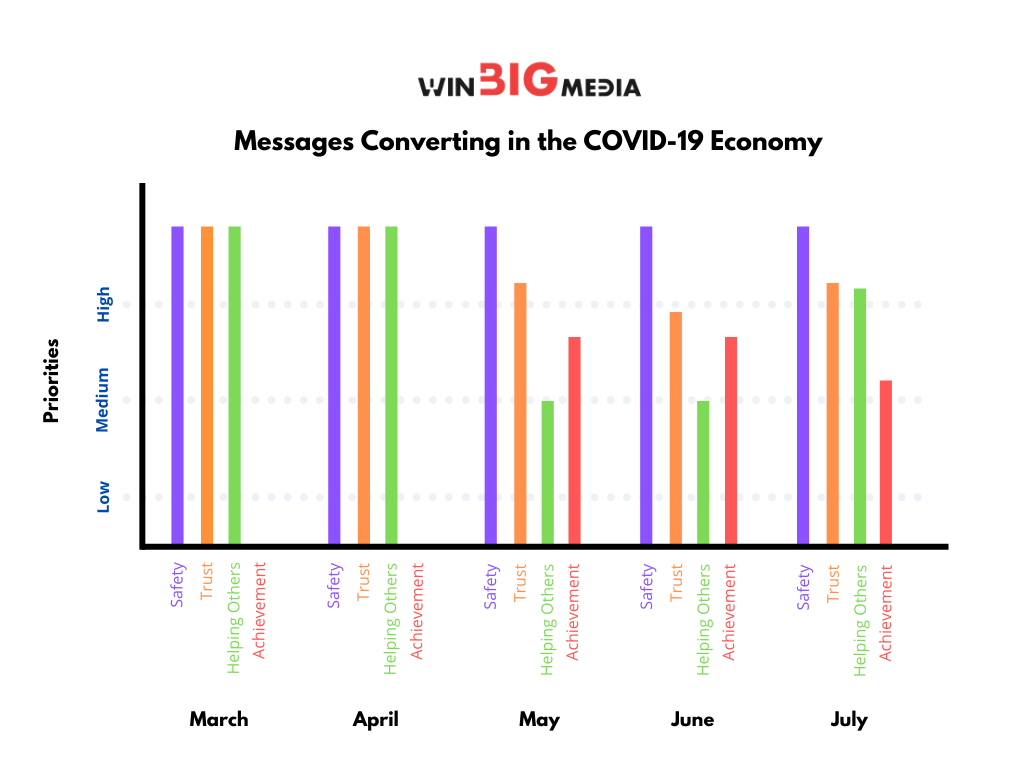The 21/90 rule is in full effect and it’s about to impact your business more than you know.
What’s the 21/90 rule?
To quote: “It takes 21 days to build or break a habit and 90 days to create a lifestyle. If you want to make most things a cornerstone to your life, understand that it won’t feel like second nature to you until about the 90-day mark.”
120+ days into the Covid-19 economic lockdown and the changes in your customer’s buying habits are becoming their new lifestyle.
There is no argument when you see the data, but here is what is clear to me — a reckoning is happening in the economy — and you need to know how to adjust your business immediately.
Today I am releasing the 5th Covid-19 Survey since March (surveying 25,152 Americans, modeling it to 200+ million consumers, 550 million connected devices, tracking 10 billion+ daily online decisions) and with new cases exploding around the country, it’s critical that you understand how customer decisions (and mindset) have shifted, especially in the last two weeks.
In late March and early April, our initial Covid-19 consumer data reports made it clear that business owners must stop marketing their brand, product, or service around the types of messages focused on “status, significance, wealth creation.” Only three messages carried weight at that moment:
- Making your customers/clients feel “safe” with your product or service offering.
- Proving and earning “trust” with your customers/clients.
- Showing how your product/service is “helping others.”
When the economy opened back up in May and June (and when Black Lives Matter protests and riots broke-out), we saw the “safety” message emerge as the top value, driving purchasing decisions (outweighing “trust” and “helping others”).
Now, with the new explosion of Coronavirus cases, the data is telling us those late March/April messages of safety, trust, and helping others — are the top priorities for consumers again.
Where in the data do I see this?
89% of Americans are concerned about the economy to a moderate or large extent. 79.5% are concerned about their health to a moderate or large extent. The majority of Americans (aka — your customers/clients) have more concerns about the economy than with their own health.
When you add in that 72.4% of Americans believe the U.S economy won’t return to normal until at least Spring 2021….well, that’s a huge concern.
American consumers are nervous, frightened, and resigned to the new weird world. This will absolutely change their purchasing habits even more.
In addition, consider these statistics and factors:
- Unemployment benefits will be running out at the end of July.
- The recent negative economic effects of lockdowns in states like California, Arizona, Texas, and Florida (mostly in South Florida).
- Our July 2020 data shows that 96.4% of Americans are not going to make a luxury purchase anytime soon. That’s an increase from June where 93% of consumers indicated they wouldn’t be making a future luxury purchase. That trend is going in the wrong direction for the broader economy.
- The stress on parents regarding their children’s fall education enrollment is at unprecedented levels — whether online, hybrid or in-person physical attendance (and you better believe there will be a tightening of family budgets around this “stress”).
- The media is driving almost exclusively bad health news, at unprecedented levels (click-porn sells people!), which is creating massive amounts of fear.
The data tells me this is not as much pessimism as it is a resignation — a depression. An economic reckoning is happening right now.
Here are my recommendations for business owners:
- I’ve preached this for months but holy hell, it’s important now. You must position your brand, product, or service as a “need”, not a “want.” What does that mean? I wrote about it recently HERE
- For the last decade, we’ve lived in a global economy. As a marketer, we have targeted client messages and advertising campaigns mostly on demographic, not geographic data. But with every city and state undergoing something unprecedented right now (Covid-19 and/or protests), we are seeing a massive difference in geographic messaging.
What do I mean by that?
Well, with one of our product clients, vegans in New York City are buying “organic” for different reasons than vegans in Orlando, FL. By understanding these differences in the data, we were able to reduce our clients’ cost-per-acquisition clicks by 67%. The lesson here is that you must also understand the data in each geographic region where you are running ads (in addition to demographics).
Interested in reading the full data report to glean new insights into your customers or clients — and win in the new economy? You have two options:
- I am giving you exclusive FREE access to all of our data (March, April, May, June, and July + our survey analyzing the protest culture on consumers) — just go to winbigmedia.com, click on the “Covid-19 Consumer Research” tab (my “crib-notes” analysis of all the data is also found on this page as well).
- If you are interested in deeply understanding your specific customers (both demographically and geographically) in real-time to identify how to pivot your offerings or message, let me know. I’m willing to evaluate up to 3 data sets in your target market (for example: tracking your customer/client list, your website visitor behavior, and your ideal client market) for an extremely low cost (less than $5k). We will overlay your target lists and track your consumers’ movements online to understand not just what they “say” but also what they “do” online. This will allow you to optimize your marketing messaging and improve ROI. It’s massively helpful to the business owners who’ve undertaken it.
Are you against this? If not, click HERE to learn more:
Phillip

